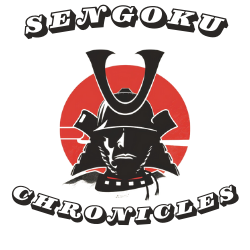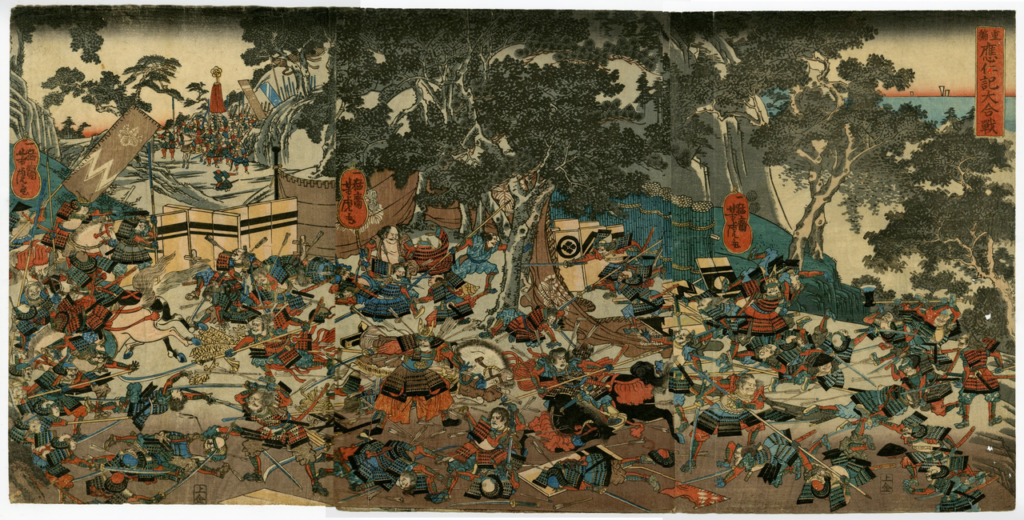Introduction to the Sengoku Era: Japan’s Age of Warring States
The Sengoku Era, spanning approximately from the mid-15th century to the early 17th century, stands as one of the most fascinating and transformative periods in Japanese history. Often referred to as the “Age of Warring States,” this era was marked by near-constant military conflict, social upheaval, and political intrigue. It was a time when powerful samurai warlords, known as daimyos, battled fiercely for dominion over the land, forging and breaking alliances in their quest for power. The term “Sengoku” itself, translating to “warring states,” aptly captures the chaotic nature of this epoch, during which the traditional order of medieval Japan was upended, leading to the emergence of a new societal structure.
This tumultuous period was initiated by the decline of the Ashikaga Shogunate, a weakening central authority that struggled to maintain control over the increasingly autonomous and ambitious daimyos. The power vacuum created by the shogunate’s decline allowed these feudal lords to rise in prominence, each commanding large armies of samurai warriors. As these daimyos vied for supremacy, Japan was plunged into a state of perpetual conflict, with the landscape of power constantly shifting beneath the feet of friend and foe alike.
Yet, the Sengoku Era was not solely defined by warfare. Amidst the strife, there were profound cultural and societal shifts. The period saw significant advancements in military tactics and technology, including the introduction of firearms, which were used with devastating effect. Simultaneously, it was an age that fostered great artistic and cultural development, influenced by the Zen Buddhism practiced by many samurai. The chaos of the era necessitated political and economic innovation, leading to reforms that would lay the groundwork for the eventual unification of Japan.
The story of the Sengoku Era is a tale of human ambition, resilience, and transformation. It is a chapter in Japanese history that offers a window into the complexities of power, the brutality of war, and the capacity for change. This blog post aims to explore the causes that led to this age of conflict, the key figures whose actions shaped the course of history, the impact of the era on Japanese society and culture, and the legacy it left behind, paving the way for the emergence of modern Japan. Through this exploration, we seek not only to understand the historical significance of the Sengoku Era but also to reflect on the timeless lessons it imparts about the nature of human endeavor and the pursuit of power.
The Causes of the Sengoku Era: A Prelude to War
The Sengoku Era, a period marked by relentless warfare, political fragmentation, and social upheaval, did not emerge in a vacuum. Its inception was the result of a complex interplay of factors that weakened the central authority and emboldened regional powers. This section delves into the primary causes that set the stage for this turbulent period in Japanese history.
Political Vacuum: The Decline of the Ashikaga Shogunate
At the heart of the Sengoku Era’s onset was the gradual decline of the Ashikaga Shogunate. Established in 1336, the Ashikaga Shogunate initially succeeded in centralizing power. However, over time, it began to lose its grip on the provinces. The shogunate’s failure to control the powerful regional daimyos, along with internal conflicts and succession disputes, significantly eroded its authority. By the mid-15th century, the Ashikaga Shogunate was a shadow of its former self, unable to enforce its will beyond the capital, paving the way for the rise of local warlords.
Economic Strife and Social Unrest
Economic factors played a crucial role in the destabilization of Japan during this period. The country faced several natural disasters, including famines and epidemics, which severely impacted agricultural productivity and led to widespread suffering among the peasant class. Moreover, the Ashikaga Shogunate’s mismanagement of trade policies and inability to prevent piracy on the seas strained the economy further. This economic downturn, coupled with heavy taxation and the exploitation of peasants by their landlords, sparked numerous peasant uprisings across the country. The social fabric was stretched thin, creating fissures that the ambitious daimyos would exploit.
Rise of Powerful Samurai Clans and Regional Daimyos
With the central authority weakened and the country in economic and social distress, powerful samurai clans saw an opportunity to expand their power. These clans, led by ambitious daimyos, began to assert their independence from the Ashikaga Shogunate, effectively becoming sovereign rulers of their domains. They built strong military forces and fortified their castles, preparing for the inevitable conflicts ahead. The loyalty of samurai warriors shifted from the shogunate to these local lords, who promised greater rewards and a share in the spoils of war.
The Sengoku Era was thus characterized by a power vacuum where the central government’s authority was contested by regional warlords. This fragmentation of power led to a highly decentralized state, where the only rule was that of the sword. As daimyos vied for supremacy, Japan entered a period of continuous warfare, with each lord seeking to expand his territory and influence.
The roots of the Sengoku Era lay in the confluence of these political, economic, and social factors. The decline of the Ashikaga Shogunate’s power, economic hardship, social unrest, and the rise of autonomous daimyos set the stage for a century of conflict. This era of warfare would eventually lead to the emergence of a new order, but at the cost of immense human suffering and devastation. As we explore the major clans and figures of the Sengoku Era, we delve deeper into the stories of those who shaped this period of relentless strife and ambition.
Major Clans and Figures of the Sengoku Era: Architects of Power
The Sengoku Era was characterized not just by its battles and sieges, but by the remarkable figures who emerged from its tumultuous currents. These leaders, each with their own vision for Japan, wielded immense military power, strategic acumen, and sometimes, unparalleled cunning. Their actions shaped the course of Japanese history, leaving a legacy that is remembered to this day. This section introduces some of the most influential daimyos and their clans, whose ambitions fueled the fires of this age of war.
Oda Nobunaga: The Unifier Through Fire and Sword
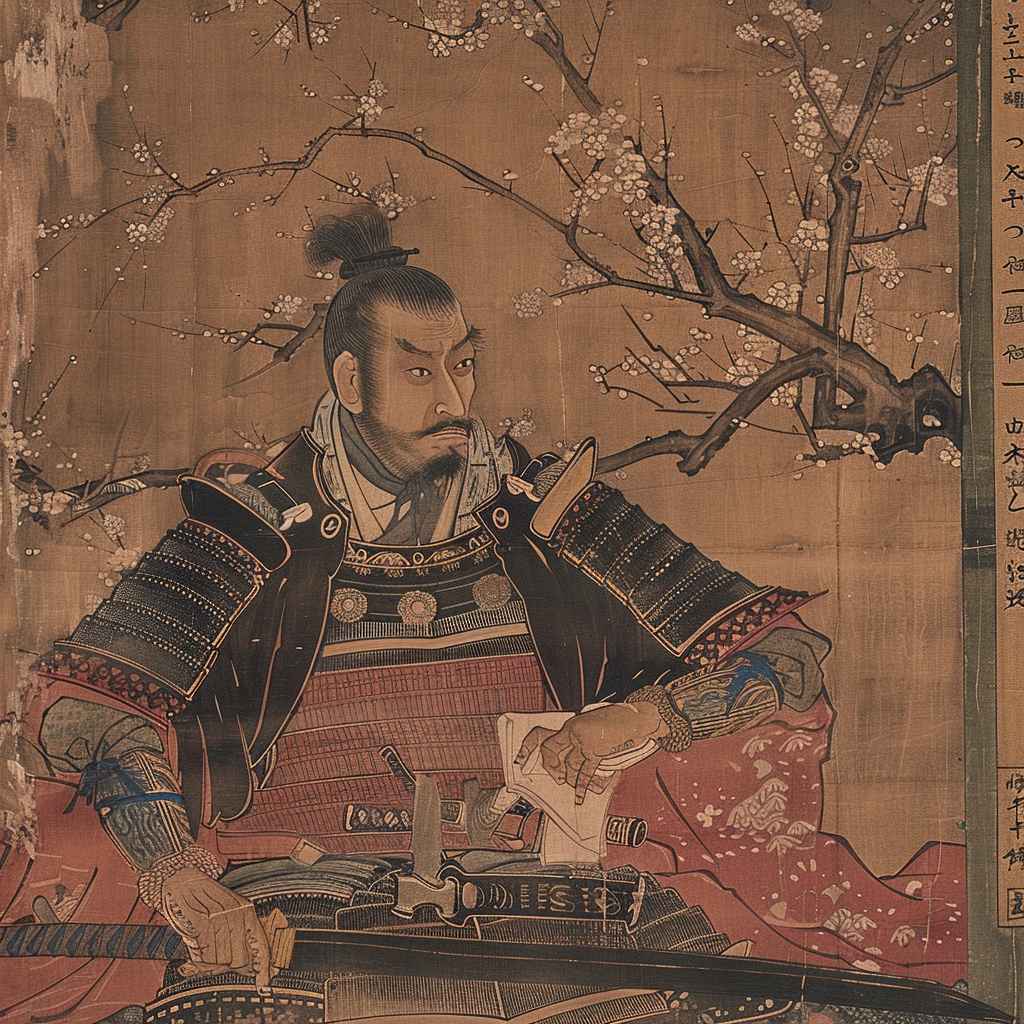
Oda Nobunaga, a name synonymous with the Sengoku Era, embarked on a ruthless campaign to unify Japan under his rule. Originating from the relatively minor Oda clan in Owari Province, Nobunaga’s innovative military tactics and merciless approach to warfare allowed him to defeat much larger foes. His most notable victory at the Battle of Okehazama in 1560, where he defeated the formidable Imagawa Yoshimoto against overwhelming odds, catapulted him into the forefront of Japanese politics. Nobunaga’s use of firearms, a relatively new technology in Japan, along with his strategic genius, set the stage for a new era of warfare and marked the beginning of his quest for unification.
Toyotomi Hideyoshi: From Peasant to Supreme Ruler
Following Nobunaga’s assassination in 1582, his retainer and trusted general, Toyotomi Hideyoshi, rose to prominence. Hideyoshi’s story is a remarkable tale of ascent from humble beginnings as the son of a peasant to becoming the most powerful man in Japan. He is credited with continuing Nobunaga’s work, bringing the majority of Japan under his control through a combination of military conquests and political maneuvering. Hideyoshi’s greatest achievements include the pacification of Kyushu and Shikoku, and the invasions of Korea. His policies and reforms laid much of the groundwork for the political and social structure of Edo-period Japan.
Tokugawa Ieyasu: The Shogun of a Unified Japan
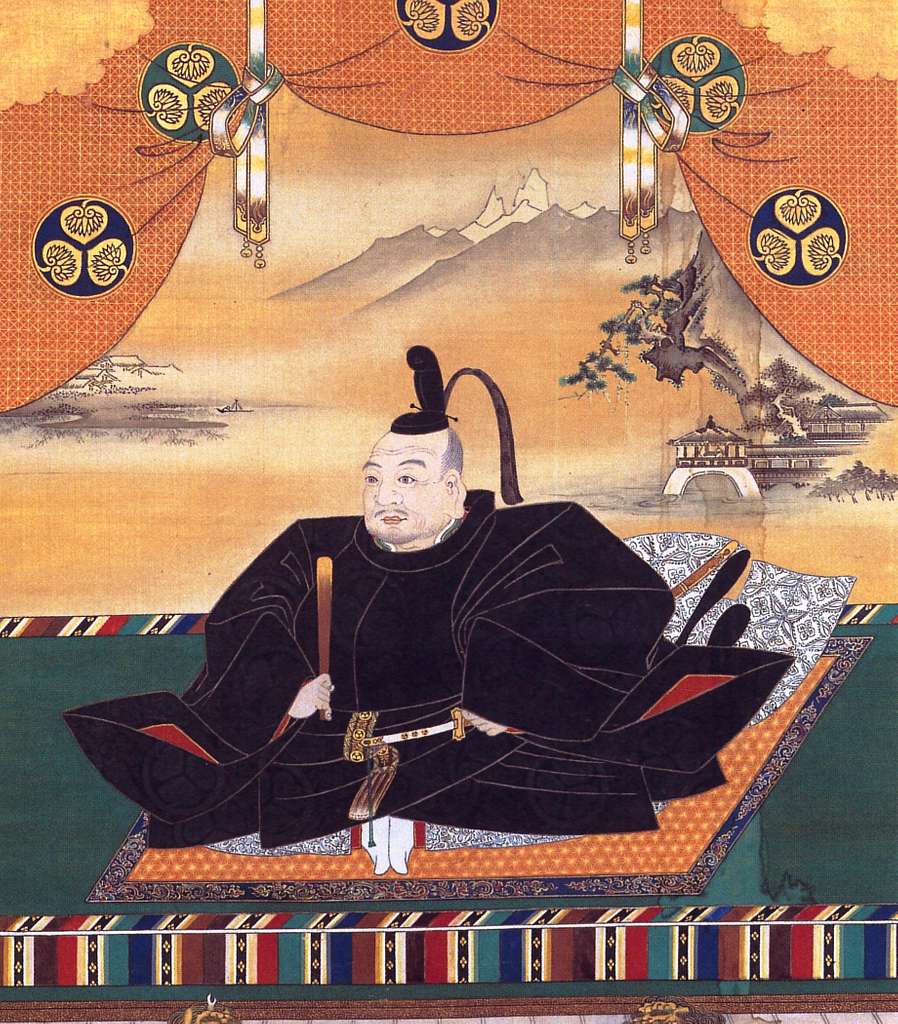
The final piece of the unification puzzle was placed by Tokugawa Ieyasu, a daimyo from the Mikawa Province who had been an ally of both Nobunaga and Hideyoshi. Following Hideyoshi’s death, Ieyasu moved swiftly to consolidate power, culminating in his victory at the Battle of Sekigahara in 1600. This decisive battle paved the way for Ieyasu to establish the Tokugawa Shogunate, which would rule a unified Japan for over 250 years. Ieyasu’s rule marked the end of the Sengoku Era and the beginning of the Edo period, a time of peace, stability, and isolation from the outside world.
Other Notable Clans and Figures of the Sengoku Era
- The Takeda Clan, under the leadership of Takeda Shingen, known for his expertise in cavalry tactics, was a dominant force in the Koshinetsu region. Shingen’s rivalry with Uesugi Kenshin, another formidable daimyo, led to a series of battles that have become legendary.
- Uesugi Kenshin, revered as a god of war, was noted for his honorable conduct and military prowess, particularly at the Battles of Kawanakajima against Takeda Shingen.
- The Mori Clan, led by Mori Motonari, and later by his grandson Terumoto, controlled the Chugoku region and played a significant role in the naval aspects of the Sengoku conflicts.
- Date Masamune, the one-eyed dragon of Oshu, was known for his boldness and vision. His leadership established the Date clan as a significant power in the Tohoku region.
These leaders and their clans forged the Sengoku Era into a time of endless strife, but also of unmatched heroism and tragic beauty. Their stories of ambition, betrayal, and the relentless pursuit of power reflect the complex tapestry of human nature and the indomitable will to shape one’s destiny. The legacy of these figures and their clans continues to influence Japanese culture and society, serving as a testament to the enduring spirit of the Sengoku Era.
Key Battles and Conflicts of the Sengoku Era: The Turning Points
The Sengoku Era, characterized by its relentless warfare and shifting alliances, was punctuated by several key battles and conflicts that significantly altered the course of Japanese history. These engagements, often emblematic of the strategic brilliance and ruthlessness of the era’s major figures, not only shaped the political landscape of Japan but also demonstrated the evolution of warfare during this period. Here, we explore some of the most pivotal battles and conflicts of the Sengoku Era, highlighting their impact and legacy.
The Battle of Okehazama (1560): Nobunaga’s Audacity
The Battle of Okehazama stands as a testament to Oda Nobunaga’s military genius and daring. In the summer of 1560, Imagawa Yoshimoto, boasting an army of 25,000 to 30,000 men, marched into Oda territory with the intent of advancing to Kyoto. Nobunaga, significantly outnumbered with only around 2,500 to 3,000 troops, opted for a bold strategy. He launched a surprise attack during a downpour, exploiting the element of surprise to its fullest. The Imagawa forces, caught off guard and scattered by the sudden onslaught, crumbled under Nobunaga’s assault. Yoshimoto himself was slain, resulting in a catastrophic loss for the Imagawa and a monumental victory for Nobunaga, setting the stage for his rise to power.
The Siege of Inabayama Castle (1567): Nobunaga’s Cunning
The Siege of Inabayama Castle showcased Nobunaga’s strategic acumen not just in battle but also in siege warfare. Inabayama Castle, controlled by the Saito clan, was a formidable fortress located in Mino Province. Nobunaga, seeking to expand his territory, initiated a campaign against the Saito. Through a combination of diplomacy, deception, and military pressure, Nobunaga isolated the castle, eroded the morale of its defenders, and ultimately took control without significant loss of life. This victory was crucial, as it significantly expanded Nobunaga’s domain and demonstrated his capacity for both direct and indirect forms of warfare.
The Battle of Sekigahara (1600): The Decisive Clash
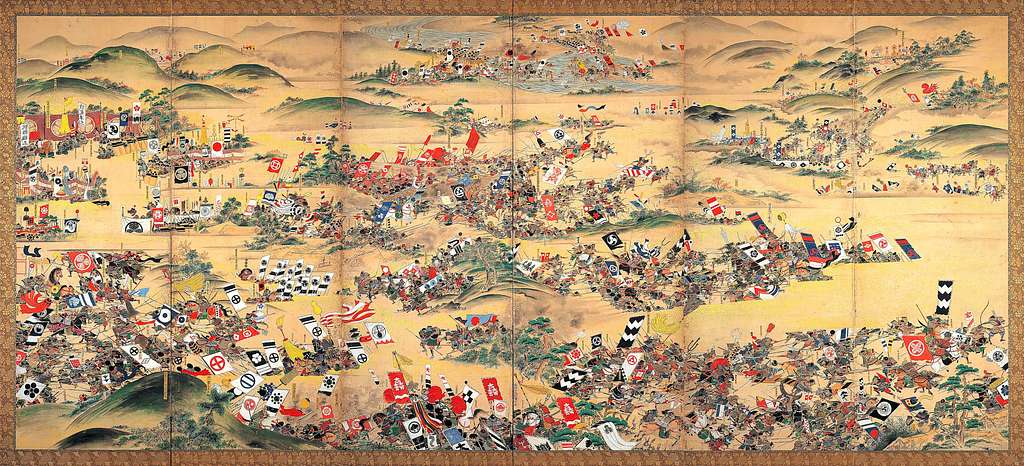
The Battle of Sekigahara, fought on October 21, 1600, was the most decisive conflict of the Sengoku Era and arguably one of the most important battles in Japanese history. Following the death of Toyotomi Hideyoshi, Japan was left divided between two major factions: the Eastern Army, led by Tokugawa Ieyasu, and the Western Army, comprised of various daimyos loyal to the Toyotomi lineage. The battle was the culmination of years of political maneuvering and military preparation. Ieyasu’s victory at Sekigahara not only marked the end of the Sengoku Era but also paved the way for the establishment of the Tokugawa Shogunate, ushering in over two centuries of peace and stability under Tokugawa rule.
Other Notable Conflicts
- The Battles of Kawanakajima (1553-1564): A series of five battles between Takeda Shingen and Uesugi Kenshin, notable for their tactical brilliance and the fierce rivalry between the two daimyos.
- The Siege of Odawara (1590): Toyotomi Hideyoshi’s campaign against the Hojo clan, which resulted in the capture of the Kantō region and further solidified Hideyoshi’s control over Japan.
These key battles and conflicts highlight the strategic depth, military innovations, and sheer willpower that defined the Sengoku Era. Each conflict left an indelible mark on the fabric of Japanese history, contributing to the unification of Japan and the end of a period marked by relentless strife. The legacies of these battles, and the figures who commanded them, continue to captivate and inspire, serving as enduring symbols of courage, ambition, and the complex quest for power and peace.
Social and Cultural Impact of the Sengoku Era: Transformation Amidst Turmoil
The Sengoku Era, while predominantly characterized by its ceaseless conflicts and political upheaval, was also a period of significant social and cultural evolution in Japan. The constant state of warfare and the shifting dynamics of power led to profound changes in social structures, arts, and intellectual pursuits. This section explores the multifaceted impact of the Sengoku Era on Japanese society and culture, shedding light on how a period marked by violence also contributed to the flourishing of cultural expressions and societal transformations.
Evolution of Samurai Culture and Bushido
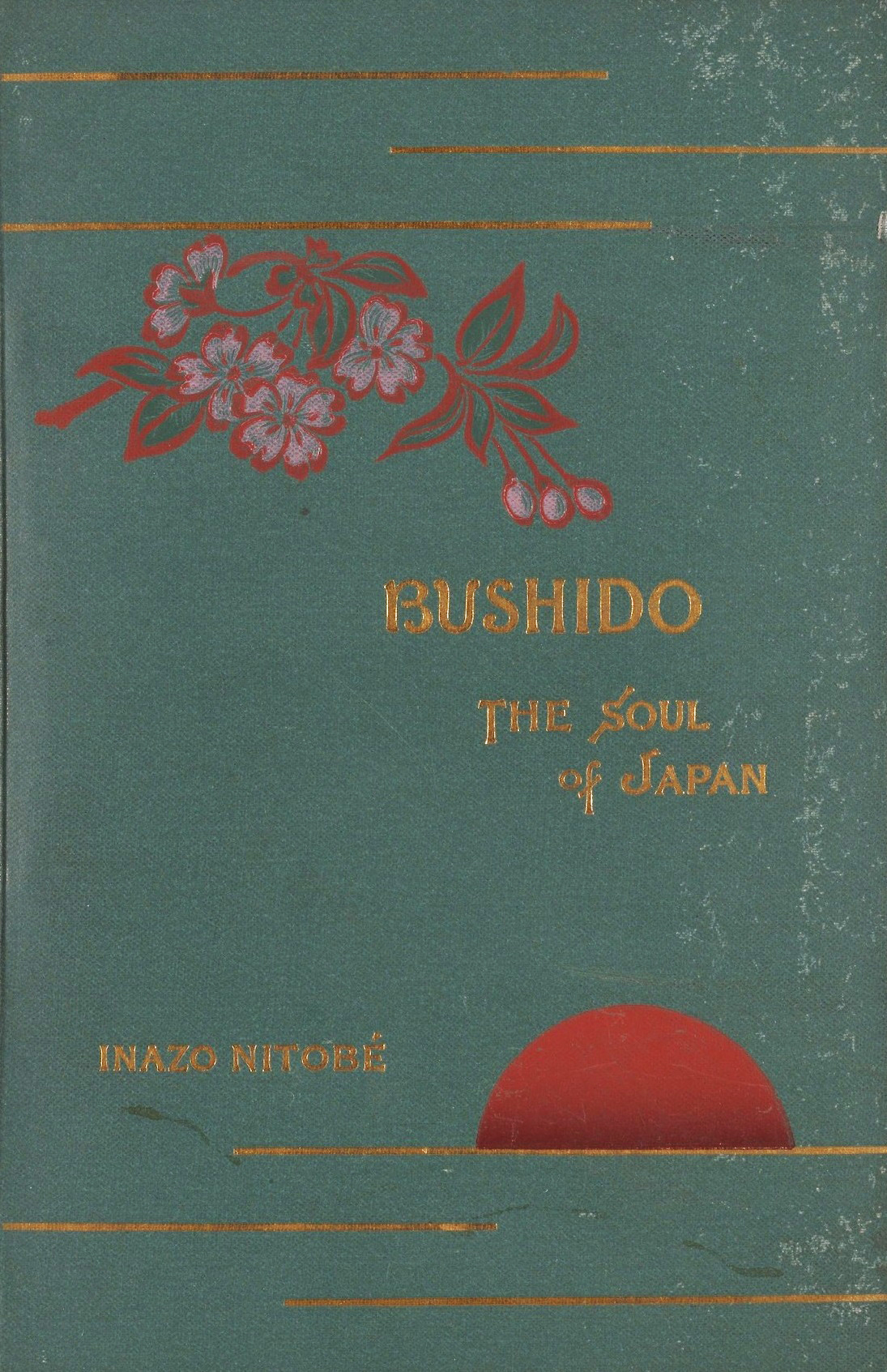
The Sengoku Era saw the samurai class rise to unprecedented prominence. As warriors who pledged loyalty to their daimyo, samurai were not only expected to excel in martial skills but also to adhere to the emerging ethos of bushido (“the way of the warrior”), which emphasized honor, discipline, and loyalty unto death. This period crystallized the values associated with bushido, influencing the behavior and ideals of the samurai class and leaving a lasting legacy on Japanese cultural identity.
Impact on Peasant Life and Social Mobility
The continuous warfare and the need for armies led to significant changes in the lives of peasants. Many were recruited or conscripted into armies, offering them an avenue for social mobility that was previously unimaginable. Additionally, the era’s turmoil often disrupted traditional land ownership and farming practices, leading to land redistribution efforts by victorious daimyos. These changes, while sometimes brutal, also offered opportunities for some peasants to rise above their station, either through martial prowess or by benefiting from the new social orders established by the ruling daimyos.
Advances in Castle Architecture and Military Technology
The Sengoku Era spurred significant advancements in castle architecture, including the development of complex defensive structures designed to withstand sieges and the use of firearms. The introduction of firearms, brought to Japan by Portuguese traders in 1543, transformed military tactics and necessitated innovations in castle design to counter these new weapons. This period saw the construction of some of Japan’s most famous castles, which were not only military fortifications but also symbols of a daimyo’s power and cultural sophistication.
Flourishing of Arts and Culture
Remarkably, the Sengoku Era also witnessed a renaissance in arts and culture. The tea ceremony, influenced by Zen Buddhism, evolved into a highly ritualized practice among the warrior class, embodying the principles of harmony, respect, purity, and tranquility. Similarly, Noh theater, a form of classical Japanese musical drama, flourished during this time, often sponsored by warlords who sought to demonstrate their cultural refinement and support for the arts. These cultural practices offered a counterbalance to the era’s violence, providing spaces for reflection, aesthetic appreciation, and the cultivation of social ties.
Intellectual Developments and the Spread of Christianity
The Sengoku Era was also a period of intellectual engagement and the introduction of new ideas. The arrival of Jesuit missionaries in the mid-16th century introduced Christianity to Japan, leading to its adoption by several daimyos and their followers. This period of initial contact facilitated cultural exchanges that influenced Japanese society, from art and music to education and technology.
The Sengoku Era’s enduring impact on Japanese society and culture is a testament to the complexity of human history, where periods of conflict and transformation can also give rise to significant cultural and societal advancements. The era’s legacy is reflected not only in the castles, artworks, and literary works that have survived but also in the enduring cultural practices and societal structures that continue to shape Japan today.
The Path to Unification: Strategies, Alliances, and Reforms
The turbulent Sengoku Era, marked by ceaseless conflict and shifting allegiances, eventually gave way to a unified Japan. This monumental achievement was not the result of a single battle or the efforts of a solitary figure but rather a series of strategic maneuvers, alliances, and reforms instituted by the era’s most prominent leaders. This section delves into the key elements and pivotal moments that paved the way for the unification of Japan, highlighting the contributions of Oda Nobunaga, Toyotomi Hideyoshi, and Tokugawa Ieyasu.
Strategies and Alliances
- Oda Nobunaga’s Bold Initiatives: Nobunaga set the foundation for unification through military conquest and strategic alliances. His approach combined outright warfare with diplomacy, as seen in his alliances with other powerful clans and his use of innovative military tactics, including the deployment of firearms on the battlefield.
- Toyotomi Hideyoshi’s Unification Campaigns: Following Nobunaga’s assassination, Hideyoshi continued the quest for unification, employing a mix of military might and negotiation. He secured the allegiance of many daimyos through a combination of sieges, marriages, and political appointments, effectively bringing large swathes of Japan under his control.
- Tokugawa Ieyasu’s Political Acumen: Ieyasu capitalized on his victory at the Battle of Sekigahara to establish the Tokugawa Shogunate, securing his position through strategic marriages, land redistribution to loyal followers, and the neutralization of potential rivals.
Administrative Reforms
- Land Surveys and the Sword Hunt: Hideyoshi implemented nationwide land surveys to assess and redistribute land more effectively, thereby consolidating his power over the daimyos. Additionally, his policy of the “sword hunt” disarmed the peasant population, reducing the potential for insurrection and solidifying the samurai class’s status as the sole military force.
- Legal Codification: Both Hideyoshi and Tokugawa Ieyasu worked on codifying laws to stabilize and govern society. These laws regulated everything from social hierarchy and governance to military service, contributing to a more orderly and unified Japan.
- Establishment of a Centralized Feudal System: The Tokugawa Shogunate finalized the unification by establishing a centralized feudal system, which imposed a strict social order and governance structure. This system effectively controlled the daimyos through a combination of political appointments, compulsory residence in Edo (present-day Tokyo), and strategic marriages.
The Role of Foreign Trade and Firearms
The introduction of firearms by Portuguese traders in the mid-16th century revolutionized Japanese warfare, giving those who mastered their use, like Nobunaga, a significant advantage. Furthermore, foreign trade, especially with the Portuguese and Dutch, brought not only weapons but also new technologies, ideas, and cultural influences that subtly shaped the path to unification by changing the way war was waged and how power was perceived and utilized.
The Legacy of Unification
The path to the unification of Japan was a complex process that involved more than just military conquest; it required strategic foresight, diplomatic skill, and significant administrative reforms. The policies and systems put in place by Nobunaga, Hideyoshi, and Ieyasu laid the groundwork for the stable governance of the Tokugawa Shogunate, which would oversee a period of peace, cultural flourishing, and isolationism known as the Edo period. This era of unification ended the constant warfare of the Sengoku Era, but it also set the stage for Japan’s future challenges and transformations, including its eventual opening to the world in the 19th century. The strategies, alliances, and reforms of the Sengoku Era’s great leaders not only unified Japan but also left an indelible mark on its national identity and historical trajectory.
The Legacy of the Sengoku Era: Echoes Through Time
The Sengoku Era, a period of relentless conflict and sweeping transformations in Japan, left an indelible mark on the nation’s history, culture, and identity. Far from being a mere historical footnote, the era’s legacy has permeated various aspects of Japanese life, influencing everything from governance and social structures to arts, literature, and popular culture. This section explores the multifaceted legacy of the Sengoku Era, highlighting its lasting impacts and the ways in which it continues to resonate in contemporary Japan and beyond.
Establishing the Modern Japanese State
The path to unification under Oda Nobunaga, Toyotomi Hideyoshi, and Tokugawa Ieyasu laid the foundations for the modern Japanese state. The administrative and social reforms initiated during this period, such as land surveys, legal codification, and the establishment of a centralized feudal system, created a template for governance that would endure well into the Edo period and influence Japan’s subsequent modernization. The era’s end marked the beginning of over two centuries of peace and stability under the Tokugawa Shogunate, setting the stage for Japan’s emergence as a unified and centralized state.
Socio-Political Transformations
The Sengoku Era was a catalyst for profound socio-political changes in Japan. The consolidation of power by the samurai class and the establishment of a rigid social hierarchy had lasting impacts on Japanese society. These changes, while stabilizing the country, also sowed the seeds for future conflicts and societal shifts, particularly as Japan entered the Meiji Restoration and sought to modernize and industrialize. The legacy of the Sengoku Era’s social restructuring can still be seen in Japan’s modern societal norms and attitudes towards authority and governance.
Cultural Renaissance
Despite the era’s violence, it was also a period of significant cultural development and artistic expression. The tea ceremony, Noh theater, and the art of sword-making flourished, reflecting the complex interplay between war and culture. The values of bushido, developed during this time, continue to influence Japanese martial arts, literature, and philosophy. The Sengoku Era’s contributions to Japanese aesthetics and cultural practices remain vibrant, celebrated in festivals, arts, and ceremonies that draw from the era’s rich cultural heritage.
Influence on Popular Culture
The Sengoku Era has captivated the imagination of people around the world, becoming a fertile ground for stories, films, video games, and manga. Figures like Oda Nobunaga, Toyotomi Hideyoshi, and Tokugawa Ieyasu have been romanticized and dramatized, embodying ideals of bravery, wisdom, and ambition. The era’s battles and strategies are re-enacted in video games and strategy simulations, while its stories inspire anime and films. This ongoing fascination underscores the era’s complex legacy as a time of both brutal conflict and incredible human achievement.
Educational and Historical Significance
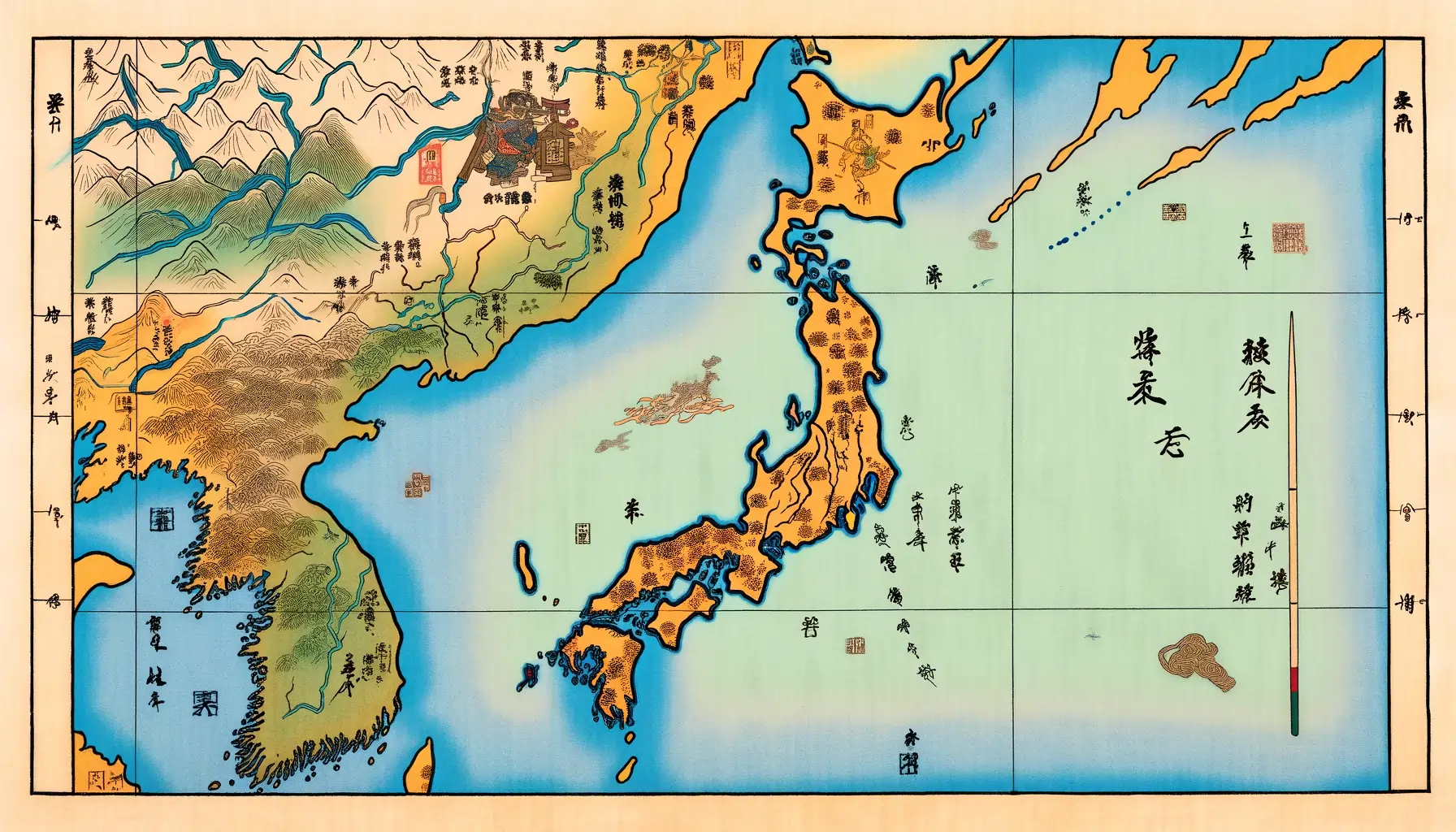
The Sengoku Era is a pivotal chapter in Japanese history, offering valuable lessons on leadership, strategy, and the consequences of warfare. It serves as an important subject of study in Japanese schools, where students learn about the era’s impact on Japan’s development and its role in shaping the nation’s identity. The period’s historical sites, castles, and museums attract scholars and tourists alike, providing a window into Japan’s tumultuous past and its path to unification and peace.
The legacy of the Sengoku Era is a testament to the resilience and ingenuity of the Japanese people. It reminds us of the profound ways in which periods of conflict can shape a nation’s trajectory, influencing its social structures, cultural expressions, and collective memory. As we reflect on the Sengoku Era, we are reminded of the enduring power of history to inspire, to teach, and to resonate across generations.
Conclusion: Reflecting on the Sengoku Era
The Sengoku Era, with its intricate tapestry of conflict, ambition, and transformation, remains one of the most compelling periods in Japanese history. It was a time when the fabric of society was torn asunder, only to be rewoven into a new and enduring pattern. Through the chaos of warfare and the ambitions of powerful daimyos, the foundation for a unified Japan was laid, paving the way for the stability and prosperity that would follow under the Tokugawa Shogunate.
This era of ceaseless conflict was not solely defined by the clashing of swords and the storming of castles. It was also a period of profound social and cultural evolution, where the concepts of loyalty, honor, and duty were refined and the arts flourished amidst turmoil. The Sengoku Era tested the resilience of the Japanese people, challenging them to adapt and overcome in the face of relentless adversity.
The legacies of the figures who dominated this period—Oda Nobunaga, Toyotomi Hideyoshi, and Tokugawa Ieyasu—are complex, characterized by both their ruthless pursuit of power and their visionary leadership. Their efforts to unify Japan forever altered the course of its history, setting the stage for the country’s emergence as a modern nation-state. The strategies they employed, the policies they enacted, and the battles they fought continue to be studied for insights into leadership, strategy, and human nature.
The Sengoku Era also serves as a reminder of the cyclical nature of history. Periods of conflict and upheaval can lead to unification and peace, but they can also sow the seeds of future strife. The era’s impact on Japanese society, culture, and national identity is a testament to the enduring influence of historical events on the collective consciousness of a nation.
In contemporary times, the fascination with the Sengoku Era lives on, evident in the plethora of books, movies, and video games that explore its stories and characters. This enduring interest speaks to the universal themes of ambition, conflict, and the quest for peace that define the human experience.
Reflecting on the Sengoku Era provides valuable lessons on the complexities of governance, the dynamics of power, and the importance of cultural and social evolution. It underscores the notion that out of chaos can come order, and from the depths of conflict can emerge a path to peace. As we look back on this tumultuous period, we are reminded of the capacity for human societies to adapt, transform, and ultimately thrive in the face of overwhelming challenges.
Further Reading and Resources: Exploring the Sengoku Era
The Sengoku Era, a pivotal period in Japanese history, continues to fascinate historians, cultural enthusiasts, and the general public alike. For those eager to delve deeper into the complexities and intrigues of this era, a wealth of resources is available. Below is a curated list of books, documentaries, and websites that offer insightful perspectives and detailed accounts of the Sengoku Era, its major figures, and its lasting impact on Japan.
Books
- “Samurai Rising: The Epic Life of Minamoto Yoshitsune” by Pamela S. Turner – While focusing on an earlier period, this book provides essential background on the samurai culture that defined the Sengoku Era.
- “The Samurai, A Military History” by Stephen Turnbull – Turnbull offers an in-depth look at the samurai class, including during the Sengoku Period, examining their tactics, battles, and impact on Japanese warfare.
- “Sengoku Jidai: Autonomy, Division and Unity in Later Medieval Japan” by Jeffrey P. Mass – This collection of essays explores various aspects of the Sengoku Era, from political divisions to efforts towards unification.
- “Oda Nobunaga: The Battle for Japan” by Stephen Turnbull – Focusing on one of the era’s most pivotal figures, Turnbull examines Nobunaga’s rise to power and his impact on the course of Japanese history.
- “Toyotomi Hideyoshi: Leadership, Strategy, Conflict” by Stephen Turnbull – This book delves into the life and achievements of Hideyoshi, highlighting his contributions to unifying Japan.
Documentaries and Films
- “Japan: Memoirs of a Secret Empire” – This PBS documentary series provides a comprehensive overview of Japanese history, including the Sengoku Era, through the Tokugawa Shogunate.
- “Age of Samurai: Battle for Japan” – A Netflix documentary series that focuses on the iconic figures and battles of the Sengoku Era, blending historical analysis with dramatizations.
- “Seven Samurai” – Directed by Akira Kurosawa, this classic film, though fictional, captures the spirit of the samurai era and offers insights into the social dynamics of the time.
Websites and Online Resources
- Samurai Archives – An extensive online resource that includes historical essays, articles, and forums discussing various aspects of samurai history, including the Sengoku Era.
- The Metropolitan Museum of Art: Sengoku Period – The Met’s online collection features artifacts from the Sengoku Period, providing a visual exploration of the era’s art and culture.
- Nara National Museum: The Samurai – Offers online exhibitions and resources related to the samurai, including armor, weapons, and scrolls from the Sengoku Era.
Museums and Historical Sites
For those who have the opportunity to visit Japan, several museums and historical sites offer a closer look at the Sengoku Era:
- The Edo-Tokyo Museum in Tokyo features exhibits on the life and culture during the Edo period, which followed the Sengoku Era.
- Nagoya Castle and Osaka Castle are among the many castles rebuilt or preserved, offering insights into the military architecture and history of the period.
- Sekigahara Battlefield remains a significant site for those interested in the pivotal battle that led to the unification of Japan under Tokugawa Ieyasu.
Exploring these resources can provide a more nuanced understanding of the Sengoku Era, revealing the complexity of its historical figures, the intricacies of its battles and politics, and the cultural innovations that emerged from this period of constant warfare. Whether through scholarly texts, visual media, or firsthand visits to historical sites, the legacy of the Sengoku Era continues to captivate and educate, offering endless avenues for discovery and reflection.
